There’s something magical about short stories. In just a few pages, they can transport you to another world, make you ponder deep truths, or leave you with a twist that lingers long after you’ve finished reading. For book lovers between 18 and 55 years old, short stories are a perfect way to indulge in literature without the commitment of a full-length novel. Whether you’re on a lunch break, commuting, or simply winding down after a long day, these tales offer a quick escape and a burst of literary pleasur
As a passionate reader myself, I’ve always found short stories to be an ideal companion for those moments when you need a dose of storytelling but don’t have hours to spare. Here are 20 of the most well-known short stories ever written—each one a masterpiece in its own right.
1. “The Tell-Tale Heart” by Edgar Allan Poe

Summary
Edgar Allan Poe’s “The Tell-Tale Heart” is a chilling tale of a man driven to madness by his obsession with an old man’s vulture-like eye. His descent into insanity leads him to commit murder, only to be haunted by the relentless beating of the old man’s heart beneath the floorboards.
Themes and Impact
This story dives deep into themes of guilt and madness. Poe’s use of first-person narration lets us experience the protagonist’s unraveling mind firsthand. It’s a classic example of gothic fiction and has inspired countless horror stories and films.
Personal Anecdote
I remember reading this story late at night in high school, and I couldn’t sleep afterward. The vivid descriptions of the old man’s eye and the beating heart stayed with me, showcasing Poe’s talent for evoking horror through psychological terror.
2. “The Lottery” by Shirley Jackson

Summary
In a small village, the townsfolk gather for an annual lottery with a shocking and horrifying outcome. This seemingly benign tradition culminates in a brutal act of violence, revealing the dark side of human nature and societal conformity.
Themes and Impact
“The Lottery” explores the themes of tradition, violence, and the collective human psyche. When it was first published, readers were shocked and disturbed, leading to a flood of letters to the magazine that published it. Today, it remains a powerful critique of blind adherence to tradition.
Personal Anecdote
Reading “The Lottery” for the first time left me speechless. The gradual build-up to the shocking climax made me question the nature of traditions and how easily people can be complicit in horrific acts when following the crowd.
3. “The Gift of the Magi” by O. Henry
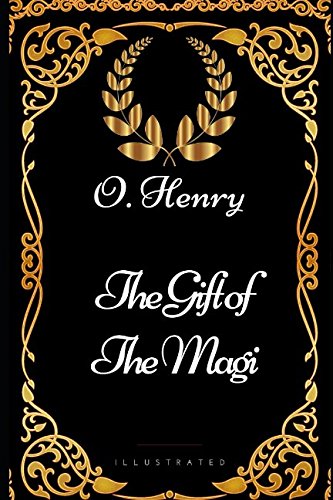
Summary
A young, impoverished couple each sacrifice their most prized possession to buy a Christmas gift for the other, resulting in an ironic twist. Jim sells his watch to buy combs for Della’s hair, while Della cuts and sells her hair to buy a chain for Jim’s watch.
Themes and Impact
This story beautifully illustrates themes of love, sacrifice, and irony. The touching narrative and the twist ending have made it a holiday favorite, often adapted into plays and movies.
Personal Anecdote
I always think of “The Gift of the Magi” during the holiday season. It reminds me of the true spirit of giving and the love behind the gestures, rather than the material value of the gifts exchanged.
4. “A Good Man is Hard to Find” by Flannery O’Connor
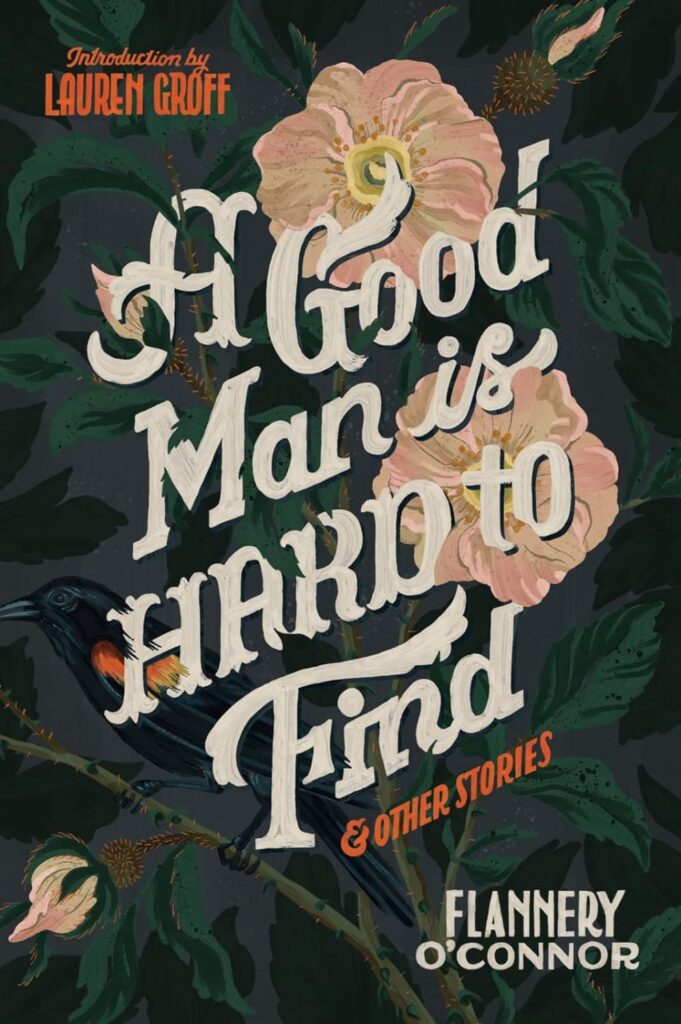
Summary
A family road trip takes a fatal turn when they encounter a criminal known as The Misfit. The grandmother’s confrontations with The Misfit highlight themes of grace, redemption, and the inherent good and evil within people.
Themes and Impact
Flannery O’Connor’s Southern Gothic tale is rich with symbolism and moral complexity. The story’s unsettling conclusion forces readers to confront uncomfortable truths about humanity and morality.
Personal Anecdote
The first time I read this story, I was struck by the grandmother’s transformation. It made me think about how people often face moments of grace and self-awareness in the most dire circumstances.
5. “Harrison Bergeron” by Kurt Vonnegut
Summary
In a future society that enforces equality by handicapping the talented and intelligent, a young man named Harrison Bergeron rebels against the oppressive system, declaring himself emperor before being violently subdued.
Themes and Impact
Vonnegut’s dystopian vision explores themes of equality, freedom, and individuality. It’s a sharp critique of enforced uniformity and the loss of personal identity, resonating with readers in any era.
Personal Anecdote
“Harrison Bergeron” always makes me appreciate the unique qualities that each person brings to the world. It’s a reminder that true equality doesn’t mean making everyone the same, but rather celebrating our differences.
6. “The Yellow Wallpaper” by Charlotte Perkins Gilman
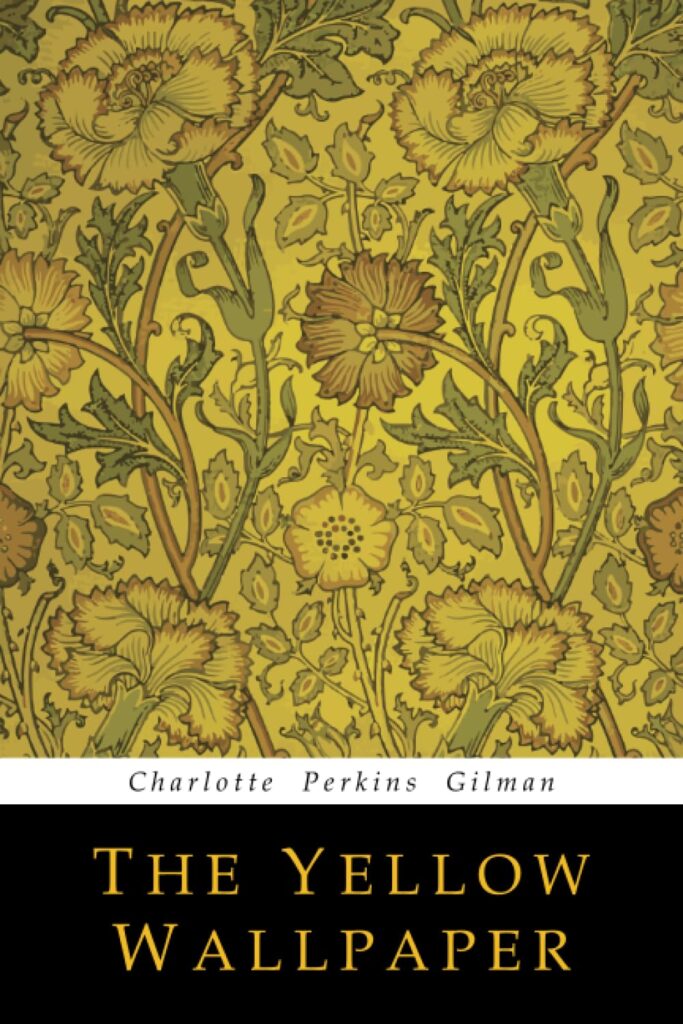
Summary
A woman’s descent into madness is chronicled through her journal entries as she becomes obsessed with the wallpaper in her room. Her confinement and lack of autonomy exacerbate her mental illness.
Themes and Impact
This story is a powerful exploration of mental illness, gender roles, and the oppressive nature of societal norms. It’s considered a seminal work in feminist literature, highlighting the need for women’s autonomy and mental health care.
Personal Anecdote
Reading “The Yellow Wallpaper” was a profound experience for me. The protagonist’s struggle and eventual breakdown resonated deeply, making me think about the importance of mental health and personal freedom.
7. “The Monkey’s Paw” by W.W. Jacobs
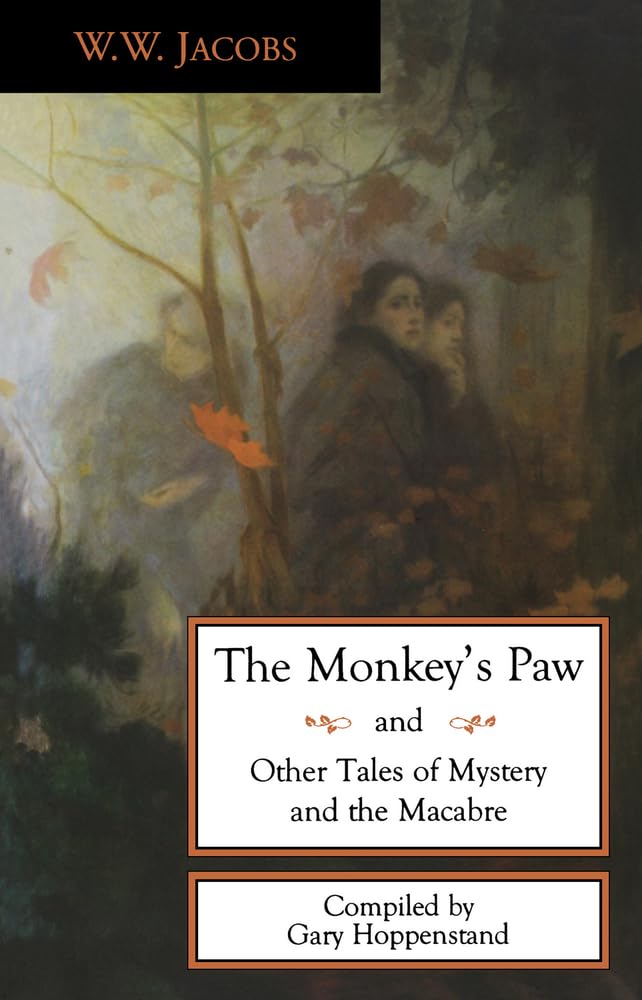
Summary
A magical monkey’s paw grants three wishes to its owner, but each wish comes with an unintended and sinister consequence. The story revolves around a family’s tragic experience with the paw’s cursed powers.
Themes and Impact
This classic horror story delves into themes of fate, consequences, and the supernatural. Its eerie atmosphere and moral lesson about the dangers of tampering with fate have made it a staple in horror literature.
Personal Anecdote
I first encountered “The Monkey’s Paw” during a camping trip, where we read it aloud around the campfire. The suspense and dark twists were perfect for the setting, making it one of the most memorable storytelling sessions I’ve experienced.
8. “A Very Old Man with Enormous Wings” by Gabriel García Márquez
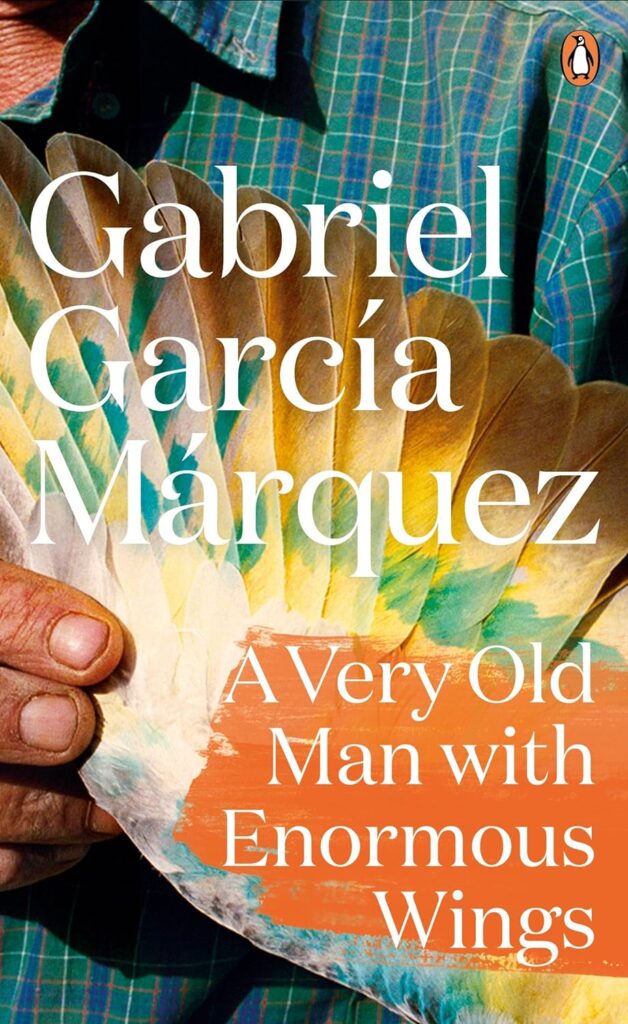
Summary
A couple discovers an old man with wings in their backyard. While debating whether he is an angel, they exploit him for personal gain, charging people to see him until he eventually flies away.
Themes and Impact
Márquez’s magical realist story explores themes of human nature, faith, and the mundane vs. the miraculous. It’s a poignant commentary on how people often fail to recognize and appreciate the extraordinary in their lives.
Personal Anecdote
This story reminded me of how we sometimes overlook the wonders around us, focusing instead on mundane concerns. It’s a beautiful reminder to keep our eyes and hearts open to the magic in everyday life.
9. “Cathedral” by Raymond Carver
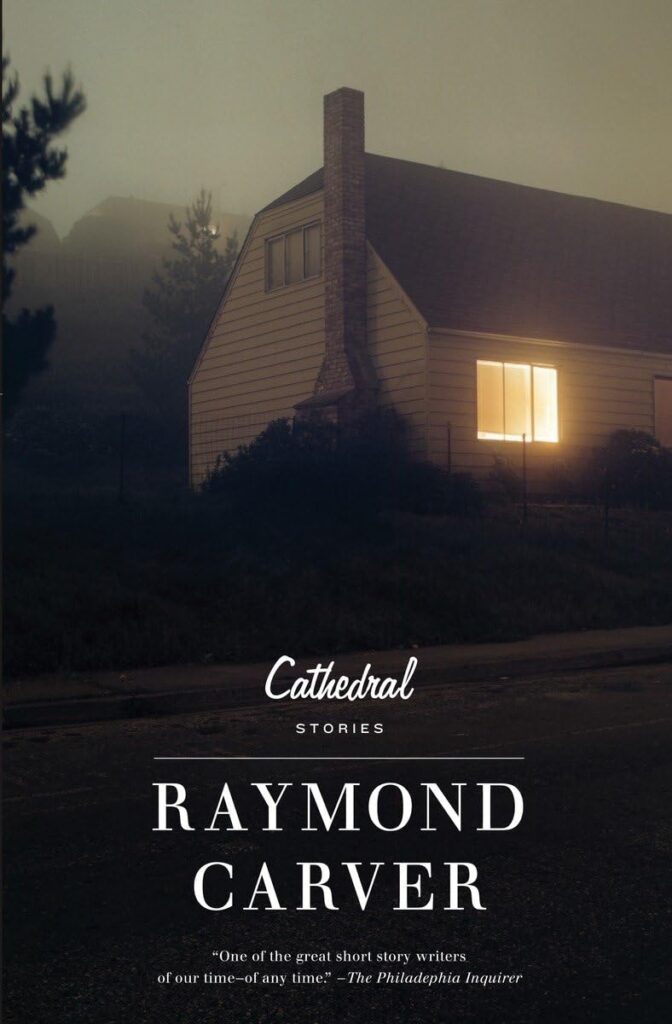
Summary
A blind man’s visit changes the perspective of a sighted man who initially harbors prejudices against him. Through their interaction, the narrator experiences a profound moment of connection and understanding.
Themes and Impact
“Cathedral” explores themes of perception, communication, and human connection. Carver’s minimalist style and emotional depth make this story a poignant exploration of how we see and understand each other.
Personal Anecdote
The first time I read “Cathedral,” I was struck by the simplicity and power of the final scene. It made me think about how often we judge others without truly understanding them and the profound impact of genuine human connection.
10. “Bartleby, the Scrivener” by Herman Melville
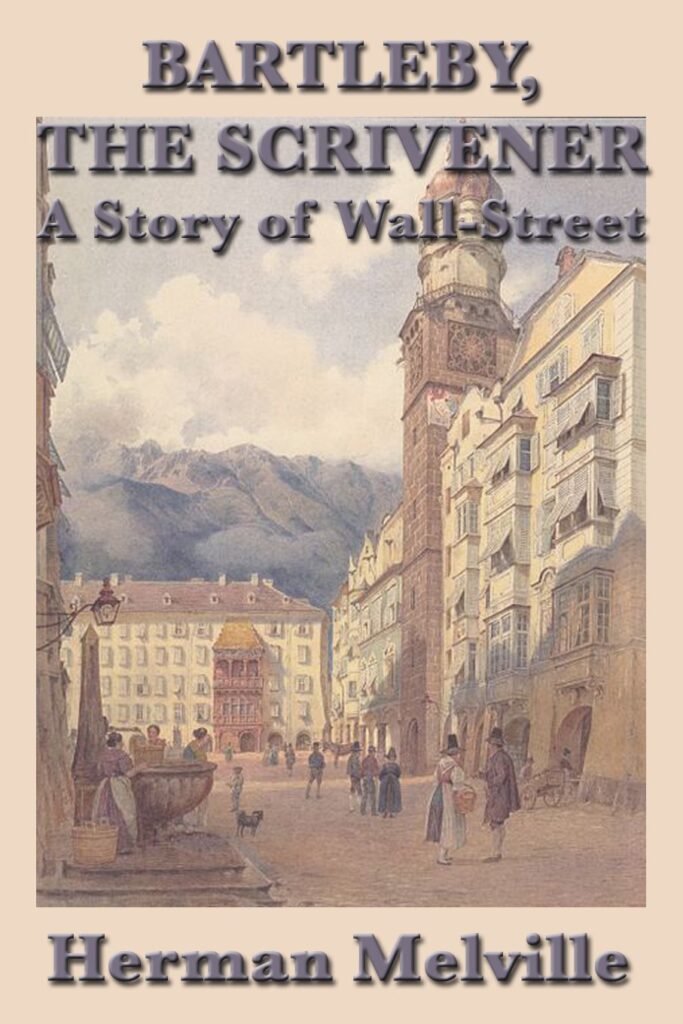
Summary
A lawyer deals with the eccentric behavior of his scrivener, Bartleby, who increasingly refuses to work, stating, “I would prefer not to.” The story highlights themes of isolation, individuality, and passive resistance.
Themes and Impact
Melville’s story is a profound exploration of modern alienation and the dehumanizing aspects of work. Bartleby’s passive resistance and ultimate fate provoke deep questions about society and human connection.
Personal Anecdote
“Bartleby, the Scrivener” resonated with me during a particularly stressful job. It made me reflect on the importance of meaningful work and the need for compassion in professional environments.
11. “The Necklace” by Guy de Maupassant
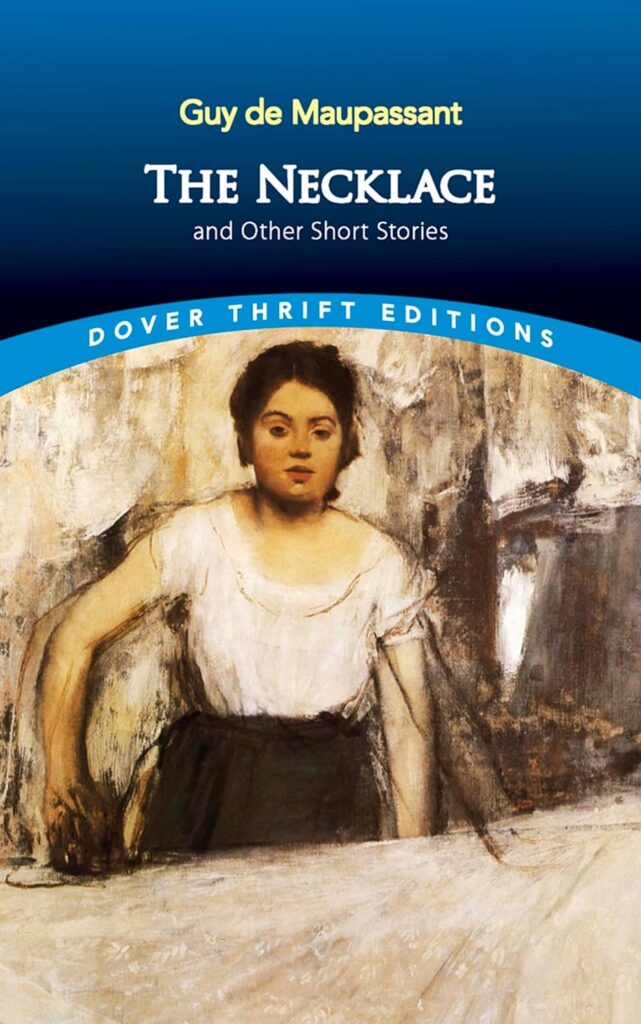
Summary
A woman borrows a necklace for a fancy event, only to lose it and replace it with a costly replica, leading to years of hardship. The twist ending reveals that the original necklace was a fake.
Themes and Impact
“The Necklace” explores themes of vanity, wealth, and reality vs. appearance. Its ironic twist ending and moral lesson about the dangers of superficiality have made it a timeless favorite.
Personal Anecdote
I often think of “The Necklace” when reflecting on the pressures of maintaining appearances. It’s a cautionary tale about valuing what truly matters in life over superficial displays.
12. “An Occurrence at Owl Creek Bridge” by Ambrose Bierce
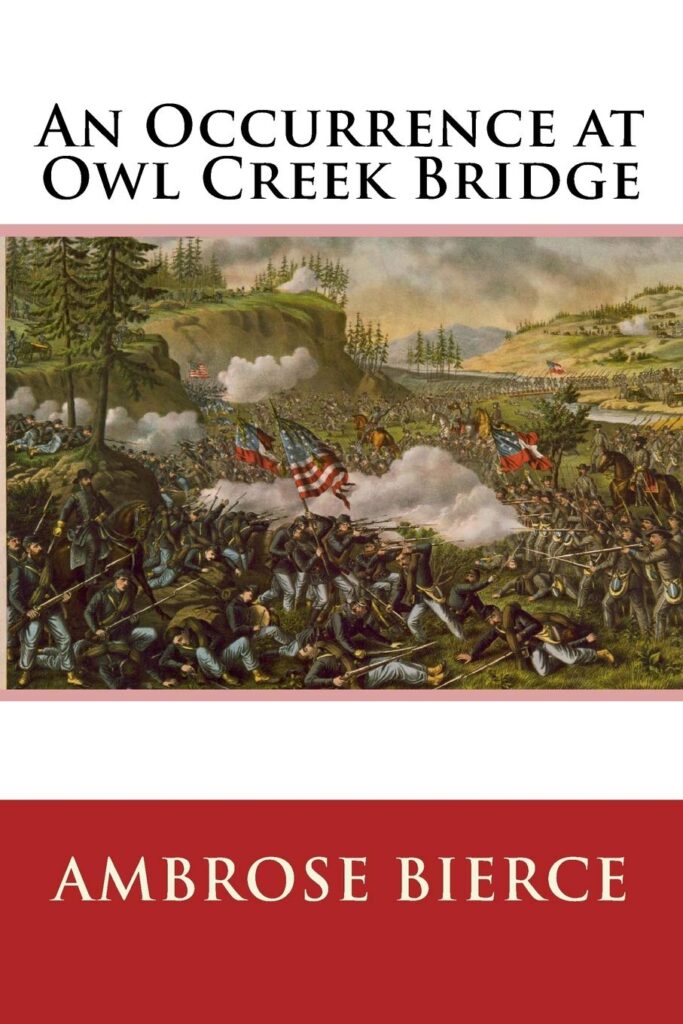
Summary
A Confederate sympathizer’s execution during the Civil War is described with a twist ending that reveals the events were a hallucination. As he dreams of escape, the story delves into themes of illusion vs. reality.
Themes and Impact
Bierce’s story masterfully blurs the lines between reality and illusion, exploring themes of mortality and the subjective nature of time. Its narrative technique and twist ending have inspired many other works.
Personal Anecdote
The first time I read “
An Occurrence at Owl Creek Bridge,” I was captivated by the vivid descriptions and the twist ending. It’s a story that made me appreciate the power of perspective and the mind’s ability to transcend reality.
13. “The Dead” by James Joyce
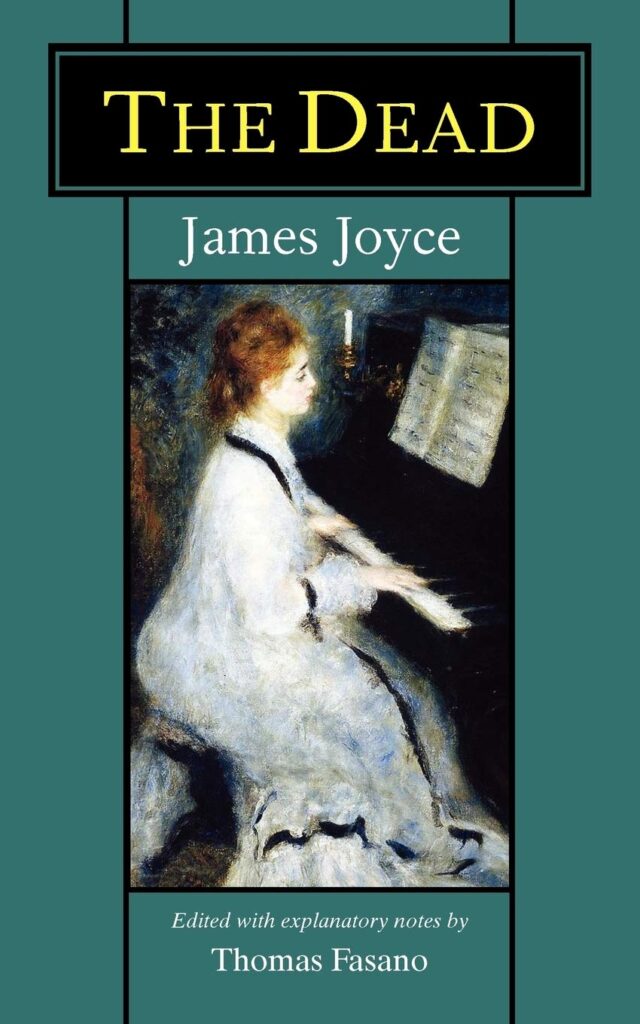
Summary
At a Christmas party, Gabriel Conroy experiences a profound epiphany about life and death, spurred by a revelation about his wife’s past love. The story is a poignant exploration of memory and mortality.
Themes and Impact
“The Dead” is a cornerstone of modernist literature, exploring themes of epiphany, memory, and mortality. Joyce’s rich, layered prose and deep emotional resonance make it a timeless masterpiece.
Personal Anecdote
Reading “The Dead” for a literature class was a transformative experience. Joyce’s intricate narrative and the emotional depth of Gabriel’s epiphany left a lasting impression on me, showcasing the power of literature to reveal deep human truths.
14. “The Metamorphosis” by Franz Kafka
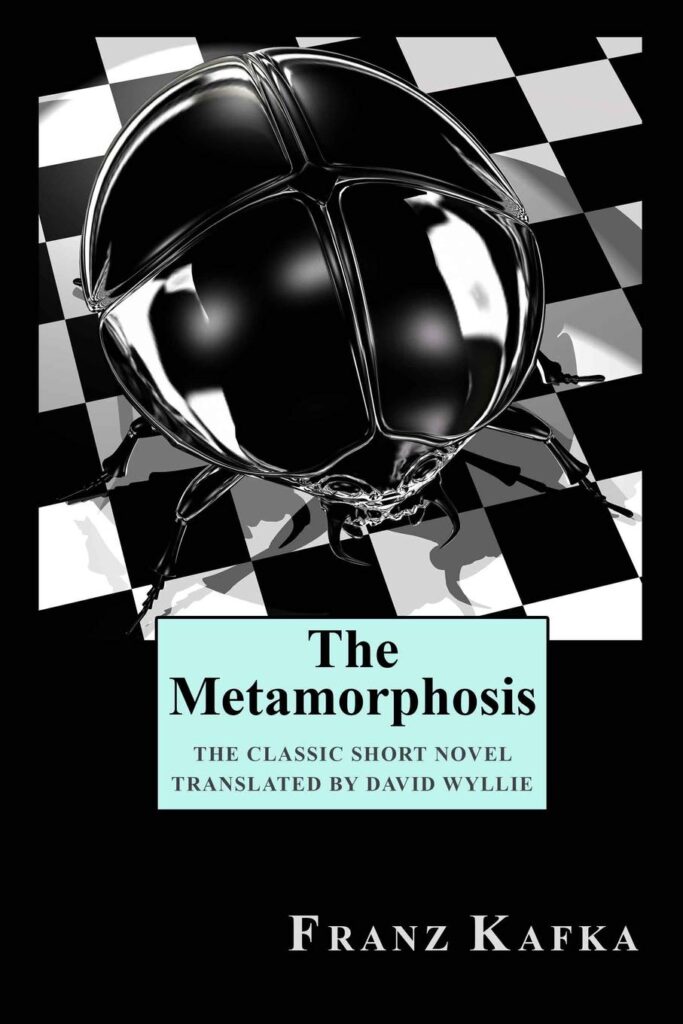
Summary
Gregor Samsa wakes up one morning to find himself transformed into a giant insect, causing his family’s life to spiral into chaos. The story explores themes of alienation, identity, and family dynamics.
Themes and Impact
Kafka’s absurdist tale is a powerful exploration of existential angst and the alienation of the individual in modern society. Its influence on literature and popular culture is immense, making it a cornerstone of existential fiction.
Personal Anecdote
“The Metamorphosis” was one of the first Kafka stories I read, and it left a profound impact. Gregor’s transformation and the ensuing family dynamics made me think about how we perceive ourselves and our roles within society.
15. “To Build a Fire” by Jack London
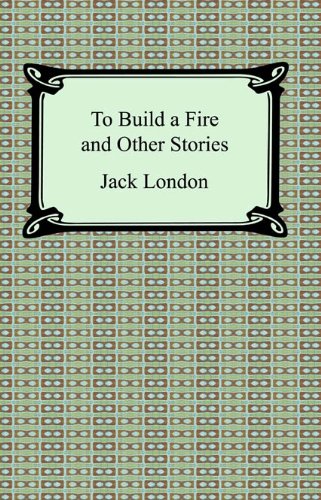
Summary
A man and his dog struggle to survive in the extreme cold of the Yukon, with the man’s hubris and underestimation of nature leading to his demise. The story highlights the power of nature and human frailty.
Themes and Impact
London’s story is a gripping tale of survival and a stark reminder of nature’s unforgiving power. Its themes of hubris and human frailty resonate deeply, making it a classic in adventure fiction.
Personal Anecdote
Reading “To Build a Fire” on a cold winter’s night made the story’s harsh setting all the more vivid. It’s a tale that underscores the importance of respecting nature and understanding our limitations.
16. “The Most Dangerous Game” by Richard Connell
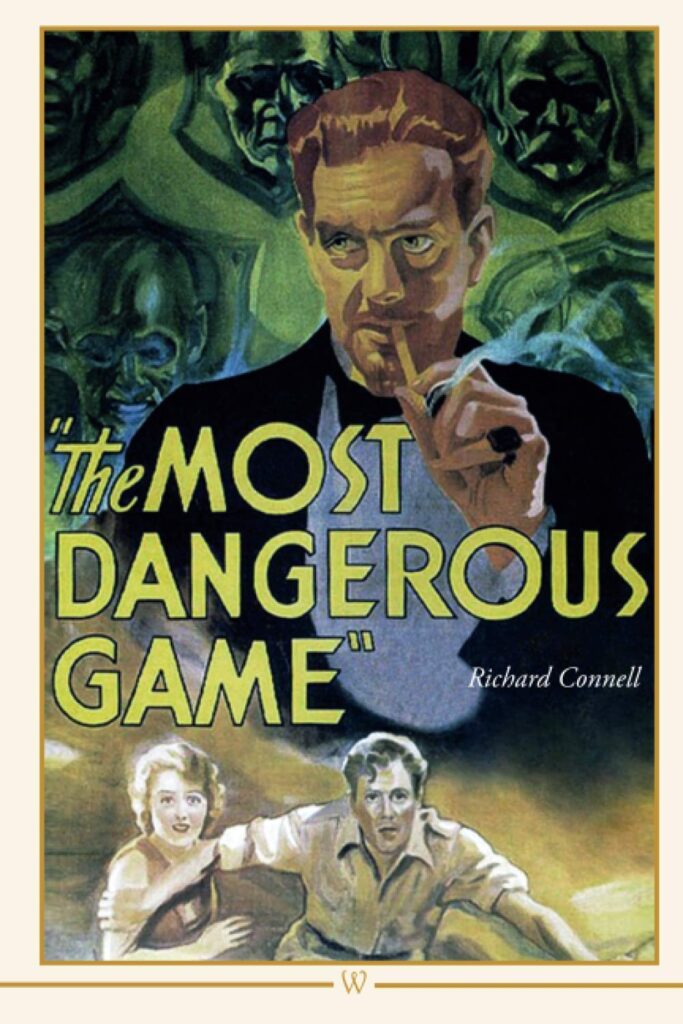
Summary
A big-game hunter becomes the hunted when he is shipwrecked on an island owned by General Zaroff, who hunts humans for sport. The story explores themes of civilization vs. savagery and survival.
Themes and Impact
Connell’s adventure story is a thrilling exploration of the thin veneer of civilization and the primal instincts of survival. Its gripping narrative and moral questions have made it a popular subject for adaptation.
Personal Anecdote
“The Most Dangerous Game” always reminds me of discussions in high school about human nature and morality. The story’s intense plot and ethical dilemmas sparked lively debates that deepened my appreciation for literature’s ability to provoke thought.
17. “Young Goodman Brown” by Nathaniel Hawthorne
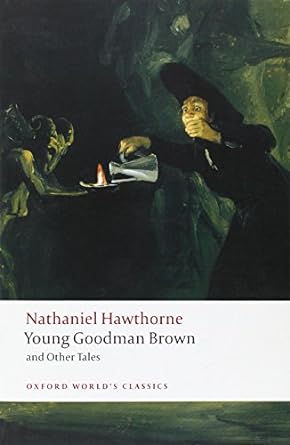
Summary
Goodman Brown ventures into the forest and encounters a series of disturbing visions that challenge his faith and perception of morality. The story explores themes of faith, evil, and disillusionment.
Themes and Impact
Hawthorne’s dark romanticism and exploration of human nature make “Young Goodman Brown” a profound tale of moral ambiguity and the loss of innocence. Its rich symbolism and haunting narrative continue to captivate readers.
Personal Anecdote
Reading “Young Goodman Brown” in college, I was struck by the story’s exploration of faith and doubt. It made me reflect on how our beliefs can be challenged and the impact of those challenges on our lives.
18. “Araby” by James Joyce
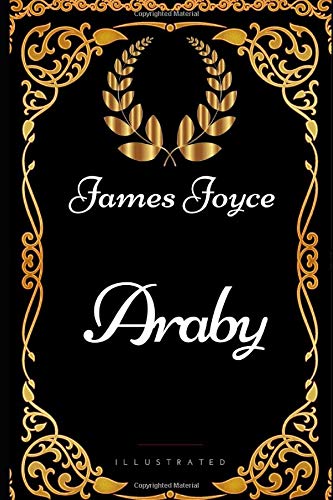
Summary
A young boy’s infatuation with a girl leads him to the bazaar named Araby, where he experiences a profound moment of disillusionment. The story explores themes of idealism, disillusionment, and the loss of innocence.
Themes and Impact
“Araby” is a beautifully written coming-of-age story that captures the bittersweet nature of growing up. Joyce’s evocative prose and deep emotional resonance make it a timeless exploration of youthful idealism and the harsh realities of life.
Personal Anecdote
“Araby” always takes me back to my own youthful crushes and the moments of realization that come with growing up. Joyce’s ability to capture those universal experiences is what makes his work so powerful.
19. “The Fall of the House of Usher” by Edgar Allan Poe
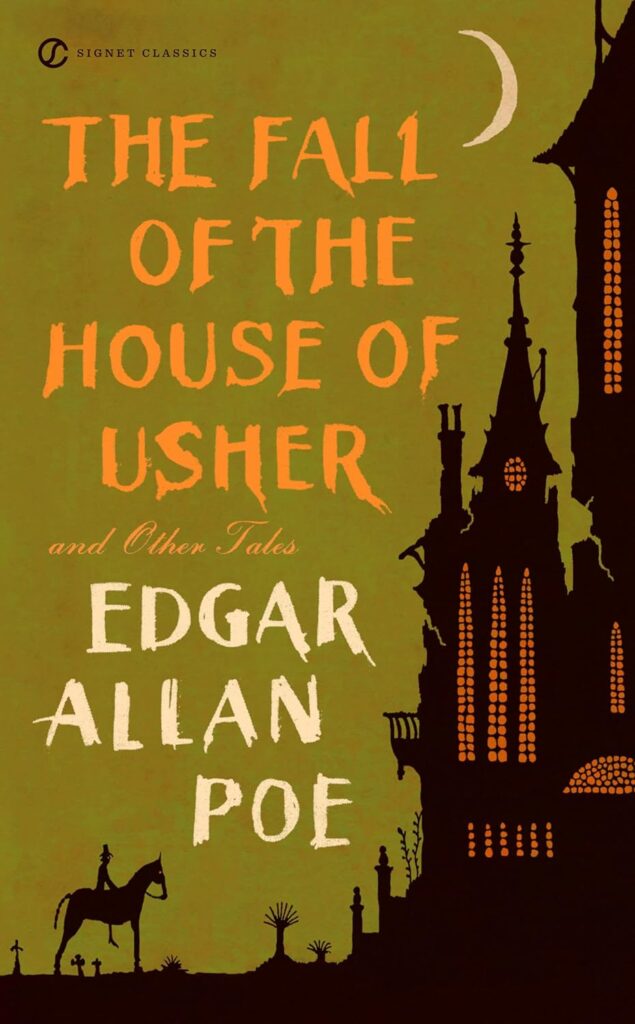
Summary
A man visits his ailing friend at the Usher family mansion, where he witnesses eerie occurrences and the ultimate collapse of the house. The story delves into themes of madness, family, and decay.
Themes and Impact
Poe’s gothic masterpiece is a haunting exploration of psychological terror and the decay of both the mind and physical structures. Its atmospheric setting and rich symbolism have cemented it as a cornerstone of gothic literature.
Personal Anecdote
“The Fall of the House of Usher” was one of the first stories that introduced me to gothic fiction. The eerie atmosphere and sense of impending doom left a lasting impression, sparking a lifelong love for the genre.
20. “The Lady, or the Tiger?” by Frank R. Stockton
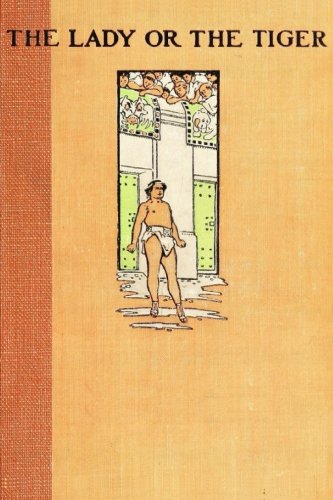
Summary
In a semi-barbaric kingdom, a courtier must choose between two doors: one hiding a lady he will marry, and the other hiding a tiger that will kill him. The story ends ambiguously, leaving readers to ponder the outcome.
Themes and Impact
Stockton’s allegorical tale explores themes of choice, consequence, and human nature. Its ambiguous ending has sparked endless debates and interpretations, making it a timeless piece that encourages active engagement from readers.
Personal Anecdote
“The Lady, or the Tiger?” is a story I love discussing with friends. The ambiguous ending always leads to passionate debates about what we believe happened, showcasing the power of literature to provoke thought and discussion.
Conclusion
Short stories pack a punch, offering profound insights, emotional depth, and memorable narratives in a compact form. These 20 timeless tales are just a starting point—each one a gem that has left an indelible mark on the literary landscape. Whether you’re revisiting an old favorite or discovering a new classic, these stories are sure to blow your mind and leave you craving more. Happy reading!

Hi there, I read your blog daily. Your writing style is awesome,
keep iit up! https://ukrain-forum.biz.ua/
Hi there! Thank you so much for your kind words and for being a regular reader. Your support means a lot to me. I’ll definitely keep the content coming! 😊